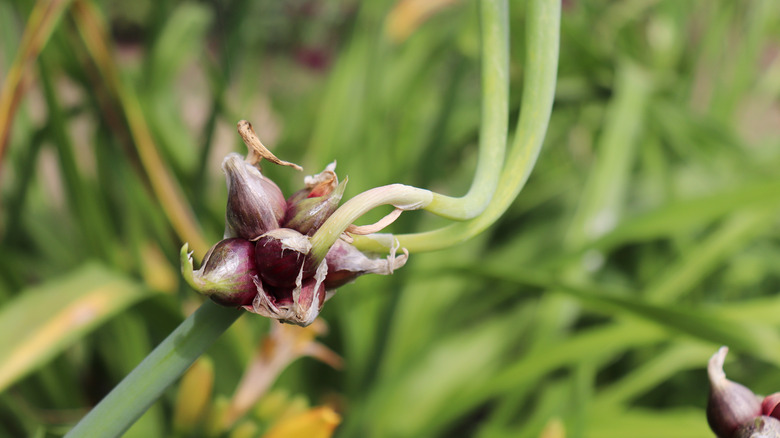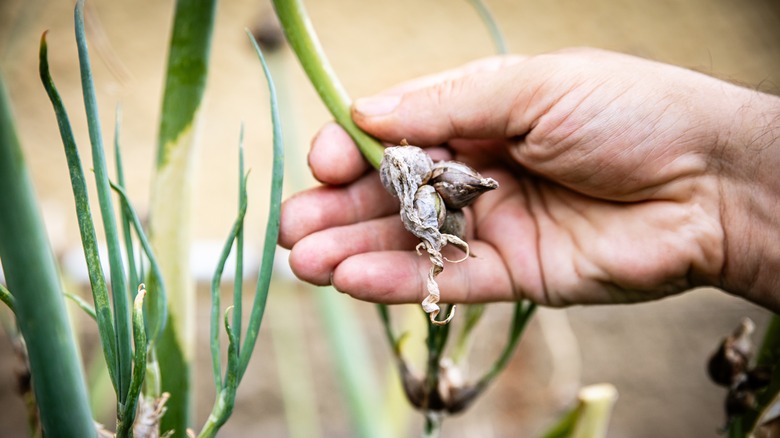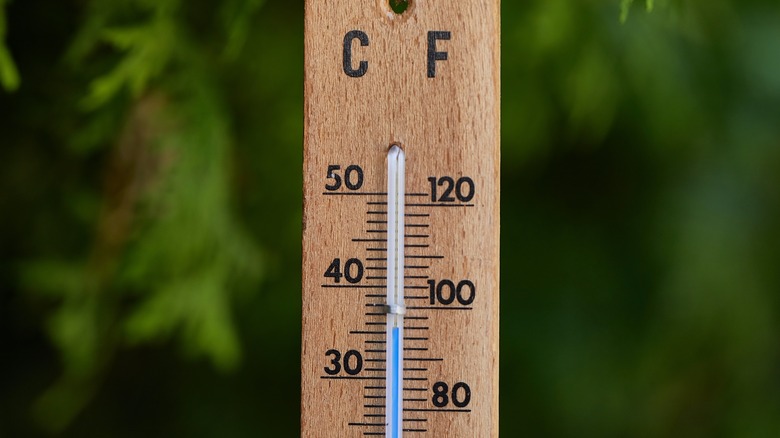Here Is The Ideal Climate To Grow Bountiful Egyptian Walking Onions
The Egyptian walking onion is on the move and may just be strolling through your garden — if you planted any, that is. This unique allium, also called tree onion or topset onion, is a perennial that grows as though it has legs to walk with. The onion's name is reflective of the way its top-set bulbs, or bulbils, eventually flop over if the bulbils aren't harvested in time. The bulbils bend the onion stem downward, like an outstretched leg walking over something beneath it. The un-harvested bulbils take root in the soil and replant themselves in their new area, continuing their walk across your garden bed.
However, whether this hybrid onion takes its first steps and grows abundantly is largely dependent on your garden's climate. The Egyptian walking onion is hardy in USDA zones 3 through 10 and the best way to ensure you grow a bountiful crop of Egyptian walking onions is to plant them in conditions where they will thrive.
Plant and care for your Egyptian walking onions
Egyptian onions are best planted in early fall and grown in mild climates, where they can be grown as a winter vegetable — they are resilient enough to survive temperatures that dip to -24 degrees Fahrenheit. To grow these onions from their top bulbs, plant them 1 to 2 inches deep, spaced apart 3 to 6 inches. They should be planted in full sun and need consistently moist, well-drained soil with at least 1 inch of water per week.
As the onions mature, you can add compost to their soil as a source of nitrogen. Adding a layer of mulch can also be considered to keep weeds at bay. Green shoots emerge from the base of the onion, in early spring. As summer approaches, the stems thicken to eventually grow the bulbils. The green shoots are ready to harvest in the spring, when the shoot is 8 inches tall, while the bulbils can be harvested in early summer, preferably when they are 1 inch wide.
The ideal climate for Egyptian walking onions
While it may seem like there's little you can do to control the climate of your garden so your Egyptian walking onions can thrive, you actually have some resources at your disposal to create a climate-resilient garden. One thing you can do is use an outdoor thermometer to monitor the temperature of your garden. You can adjust care for your Egyptian walking onions based on how hot or cool your garden is.
Since light is such an important factor for their growth, knowing how much sunlight your garden receives throughout the day is helpful. To figure this out, you can use a compass or map to figure out the orientation of your garden to the sun. Another option is to draw a diagram of your garden and spend a day mapping out the areas that receive sun and shade. Starting at 7 a.m., go outside every hour to note which areas have light and shade.
Lastly, making note of the contour of your land can be beneficial because this plays a role in how well your soil drains. Whether your Egyptian walking onions end up with overly wet soil or soil that is problematically dry, incorrect moisture levels are a crucial mistake you should avoid when growing these onions in your yard.


